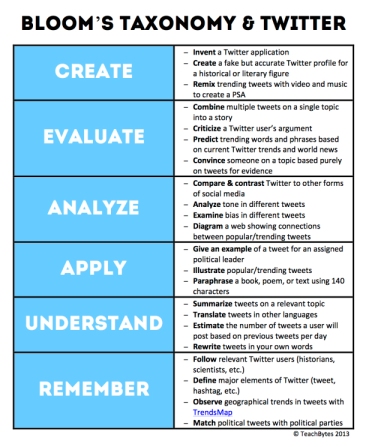What did you learn from your experience using social media and other open source tools? Should they be used for teaching and learning? Tell the story of what you learned.
(Borrowed from week 12 blog as it is applicable to week 13 blog)
One fallacy of using social media as a tool for learning is that it may provide a controlled environment with a particular confine of a particular software, I retort, control is a myth. For example, controlling what conversations people have or what they say on the phone or in emails is impossible. Similarly, one can’t control what happens in social media. Having said that, online networking really furnishes associations with more perceivability about what is, no doubt said, and likewise gives the chance to address any mistaken informing. Compare Wikipedia where different clients balance erroneous data rapidly. The need to be in control, be that as it may, is a profound authoritative issue.
As opposed to utilizing stand-alone instruments to give social networking practicality, an equivalent alternative is to introduce a coordinated effort suite or stage, which coordinates various key social advances like wikis, websites, RSS channels, social bookmarking and record imparting and additionally client profiling, in one spot inside the association. In spite of the fact that the practicality of each of the distinct segments of a collaboration platform may not frequently be as advanced as committed, stand-alone items, it does give different preferences.
My personal preference is a combination, or blended, platform of open source social medial learning. The primary factoid in teaching is conveying a message. A learner must correctly receive said message in order for positive learning outcomes to be achieved. In our class, I feel we have successfully illustrated this method by combining a mixture of face-to-face meetings with the utilization of an open source CMS and blogging tools. The weeks that were strictly asynchronous were much more mottled when it was time for receiving the message. It was discombobulated and lacked continuity. The lack of emotion in typed text is often hard to understand.
With that being said, using these tools for message dissemination is a great opportunity for the learning community. Our class experiment during week 12 utilizing Facebook and Twitter, as our primary means of communication for learning was extremely difficult. The dissemination of knowledge was wonderful however trying to carry out a continuous, fruitful, and meaningful conversation proved to be quite difficult for me. If not for the hashtag earmarking our comments in Twitter the message would have been completely lost among my personal connections and followers. Since these apps are loaded on my smartphone, it was a constant annoyance when I received a multitude of notification rings throughout the day.
Integrating Twitter or another microblogging platform into the CMS may increase initial use adoption but if it were a requirement of the class I would hypothesize that the usage rate would rapidly decline during the course of the class. This may imply a serious concern for intertwining social networking with classroom participation. This may be merely indicative of the age range of our class and it may prove that younger generations may be more receiving of the idea of utilizing Twitter as a means of communication within a class.
Utilizing Twitter in a K12 environment that is controlled and supervised may afford some benefits. To start because of the popularity it may be an initial attention grabber for students therefore increasing participation. By conducting communication within a controlled classroom environment, teachers can teach by example how to use social media in a responsible manner. It will not control what is being said outside the classroom walls and on personal sites but it is a start of leading by example.
Many users are more comfortable behind the shield of a keyboard than voicing their opinions in person. Hence the popularity of chat rooms and dating sites evolving from the 80s. Some students may be more apt to share their opinion or information within the confines of a social media platform rather than the face-to-face environment of the traditional classroom. This may also afford a 24/7 learning environment for students allowing for learning on the move.
In searching how Twitter was being used in education I ran across this chart about the use of Twitter for learning based on Bloom’s Taxonomy. Providing this graphic, TeachByte attempts to illustrate meaningful and effective ways to use Twitter in an educational learning environment.
(http://teachbytes.com/2013/03/25/22-ways-to-use-twitter-with-blooms-taxonomy/)
The idea of streamlined content such as using Twitter lists and concise conversation or bullet-point facts catered toward assisting student learning would be beneficial, especially in a K12 environment. Although educators should be mindful that Twitter isn’t exclusively an educational tool, so keeping students focused on it as a facilitator of educational knowledge or feedback could be a challenge.
Maybe a platform other than Twitter than affords more control such as Edmodo, may be better suited for a K12 environment. Instructors can control it by setting up groups for specific classes, projects, clubs, etc. There is an APP for Edmodo and students can stay connected to their classroom 24/7.
Whatever the preference of the education institution, online learning is here and gaining popularity because of many reasons including ability to reach more people at anytime. Finding effective tools to utilize with the CMS is vital to the survival of a successful program. Possibly over the next few years, as CMSs develop and incorporate the ability to contribute to social networking sites from within, use will increase. However, for now, it would seem discussion boards are the place keep in-class participation. In the mean time, possible future areas for research on this topic include: demographics of students using Twitter in class, the program of study in relationship to the participation of Twitter, the effect of Twitter on hybrid education and an analysis of how instructors are using Twitter in courses.
